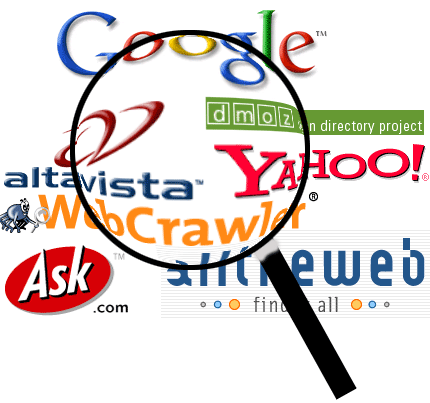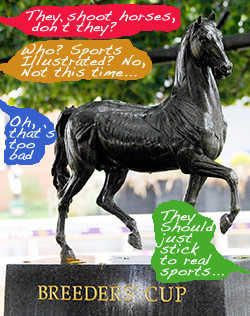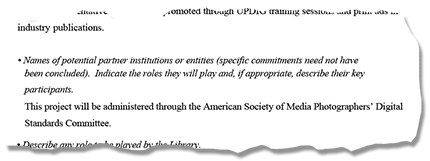Search Engines And Your Website
We are officially in Web 2.0. In fact, if you're on the bleeding edge, you are currently doing your research on the emergence of Web 3.0 - and it's coming. You know that because when magazine covers are touting Web 2.0, it's already arrived many many months earlier, if not years. 
Ok, so, your most important marketing tool is your website. That's a given. Really. And you probably submitted it to the search engines (Google, Yahoo, and MSN), and you either are "found" for your search terms, or you're not. When you're found, and then all of a sudden, you disappear, you panic. For me, my website represents two to six assignments a month, on average, and that is a substantial amount of money, so I pay careful attention to where I rank on the search engines, but not all search engines are equal, and what happens on one doesn't happen on another. That applies to successful strategies to be "found", as well as what happens when you disappear.
I've written several times about this - It's Google's World, You're Just A Small Part of It, as well as SEO - Wild Wild West or Reason & Logic?, but I want to take this even further.
Why does this happen?
When your ranking drops, 90% of the time it's because of a SE changing it's methodolgy for ranking sites. They are doing this because they believe it is in the best interests of their users. Some people refer to this as moving the goal posts, others refer to it as a "Google slap."
Interestingly enough, this has just recently happened. Over at Photo.net (here) , they are reporting people with BluDomain websites having lost SE postions just last month. So too, some liveBooks clients have experienced this. Yet, this problem is not related to either of these companies specifically, because I have spoken to over a dozen photographers in the last week that don't have BluDomain, LiveBooks, or Clickbooq sites, and they too have experienced a drop in their positions. This is a global issue, and not related to anyone service provider. For some who report having a problem last month they are now back where they were. For others, the wait and the concern continues.
Let's first pull together some resources about search engines.
First - has your site that was on Google been banned? Check on all of the three SE's. simply type in your web address - www.JohnHarrington.com, (and also try it without the "www") and see if it's there. If it is there, then you're ok. If not, let's discuss further.
Uptime - many inexpensive web hosting companies have significant downtimes. If your host was down during a Googlebot visit, thats probably part of the problem. Answer: Get a new provider.
'
Mirror sites - if you have mirrored your site, it may be that they are seeing duplicate content on other domains, and favoring (or dis-favoring) that site instead. Duplicate sites also give them cause for concern about spamming.
Tricks - don't be an idiot and do white text on a white background. That trick is so 1999. All the SE's know that, and every other trick you can think of. Don't do black hat or even grey hat tricks.
Inbound links - trading links with someone is considered a grey hat trick. Google knows what you're up to. You need inbound links without a return link. When you think you can do it by doing circular links, they have caught on to that too. Avoid link farms - too many outbound links on one page is a link farm. Avoid these, the SE's don't like them either.
Or, perhaps you are concerned about your ranking dropping. That happens. Get used to it. When you ease up on your SEO efforts, it's like stopping doing your mailings to prospective clients. Don't rest on your Page 1 laurels. Keep at it. It should be what you do in the evenings during commercial breaks of your favorite TV shows, or when you're waiting for a client to call you back.
Google, for example, has a "sandbox", (also insights here Search Engine Guide - How To Play In Google's Sandbox ) and it's there that they put sites that are less than six months old. Google wants you to earn your way out of the box. During this time, Google is looking to see if other sites are linking to you.
Let's talk for a minute now about inbound links. Since Google is the big dog, we'll use them. Inbound links come and they go. They also are relevant one day, and less so the next. For example, let's say that a SE considered the John Smith website a white hat site, and he had a link to you. Then, for some reason, his site dropped in ranking, possibly because of grey hat tactics, or perhaps because he was seen as a link farm (pages become suspect after there are about 20 links or so on a single page). If his site rating drops, so too (potentially) does the value of that link to you. Guilt by association.
To check out who has inbound links to you, search "+www.yoursite.com", and also search "link:www.yoursite.com". Both give you insights into how Google sees you. Of most importance is the "+" search. That's called a "character search", and those are often links of significantly less value than the ones that return under the "link:" search.
Does your website have a sitemap? Sitemaps are very helpful for the SE spiders. Rob Haggart over at www.APhotoEditor.com, who has a companion site - APhotoFolio.com, where he talks about his commitment to SEO (SEO Of Our Websites) gives you a great deal of excellent information. So too does liveBooks (Search Marketing ).
I also want to encourage you to check out San Diego photographer Robert Benson's blog where he compares the main website providers - Photographer template websites compared . Google has a Website Optimizer, and this link (Website Optimizer Activates Pruning, Modifies Reports, and More
) talks all about it. Further, one of my regular reads is Search Engine Watch, and they have a great piece titled "Ready to Finally Try SEO?" that is well worth a read. Another piece on Search Engine Watch is "Experts - au Natural" about organic search results that's a great read.
Let's return to inbound links. (Are you getting the clue that they are the current key to SE success?) SE Watch has "Experts - Link Love" with recent/timely pieces on link popularity. Consider this too - when someone searches and finds you, regardless of the SE, their IP address is colllected by the SE, and when you - recognized by the IP address, comes BACK and does another search, or clicks on a different link, that is a mark against you - as defined by actual SE users. Search Engline Land wrote about this as it relates to changes in paid placements, and it talks about the change as a result of a "Previous Query". ( ""Previous Query" Refinement Coming To Hit Google Results" . This is the kind of intelligence that Yahoo, with their human-created search results from the late 90's and early 2000's, couldn't scale up, but none-the-less produced very valuable results. This is the basis for the benefits of inbound links. On top of that, back in July, SE Watch wrote about User Intent - "Google On User Intent in Search Queries" () when they said ""Search in the last decade has moved from give me what I said to give me what I want.""
Next up - just a week or so ago, SE Watch interviewed one of Google's Directors, in charge of engineering, about the nuances of search. This piece is incredibly valuable to read, because it comes from the mouth of the search gods themselves - Google Discusses Search Evaluation Process (9/16/08). Back in 2007, Webmaster World had a dialog about the constant changes by Google - termed "Everflux" , (Frequent Change in Google Search Results - almost hour by hour) and also addresses how you can be found in once search result done on the East Coast, and in a different position on the West Coast, as it relates to the changes in the content in their data centers. Everflux, and other people experiences that demonstrate that this is not a new phenomenon can be found here - (Disappearing and Reappearing rankings - Everflux or something else? ).
In fact, Google themselves wrote a piece on their official blog about two weeks ago (Search evaluation at Google, and is a piece written by the same engineering director above, Scott Huffman. Huffman has written a must-read piece on this subject. In part, he writes:
Evaluating search is difficult for several reasons.
First, understanding what a user really wants when they type a query -- the query's "intent" -- can be very difficult. For highly navigational queries like [ebay] or [orbitz], we can guess that most users want to navigate to the respective sites. But how about [olympics]? Does the user want news, medal counts from the recent Beijing games, the IOC's homepage, historical information about the games, ... ? This same exact question, of course, is faced by our ranking and search UI teams. Evaluation is the other side of that coin.
Second, comparing the quality of search engines (whether Google versus our competitors, Google versus Google a month ago, or Google versus Google plus the "letter T" hack) is never black and white. It's essentially impossible to make a change that is 100% positive in all situations; with any algorithmic change you make to search, many searches will get better and some will get worse.
Third, there are several dimensions to "good" results. Traditional search evaluation has focused on the relevance of the results, and of course that is our highest priority as well. But today's search-engine users expect more than just relevance. Are the results fresh and timely? Are they from authoritative sources? Are they comprehensive? Are they free of spam? Are their titles and snippets descriptive enough? Do they include additional UI elements a user might find helpful for the query (maps, images, query suggestions, etc.)? Our evaluations attempt to cover each of these dimensions where appropriate.
Fourth, evaluating Google search quality requires covering an enormous breadth. We cover over a hundred locales (country/language pairs) with in-depth evaluation. Beyond locales, we support search quality teams working on many different kinds of queries and features. For example, we explicitly measure the quality of Google's spelling suggestions, universal search results, image and video searches, related query suggestions, stock oneboxes, and many, many more.
If you really want to understand SEO, and your SERP, then you need to read EVERY link in this piece, and follow the links on those pages. Understand that grasping SEO, and doing it right, will be one of the most profitable things you can do to grow your business. I have not steered you wrong here. These are exceptional and highly respected sources. Ignore SEO at your own peril. Resting on your SEO laurels is akin to knowing the benefits of SEO and then ignoring them - it's a dereliction of duty to yourself and your success.
Please post your comments by clicking the link below. If you've got questions, please pose them in our Photo Business Forum Flickr Group Discussion Threads.








